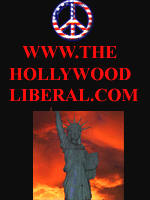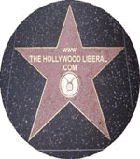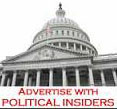Right-Wing Media Ignore The Facts To Bash Mass Transit
Posted in Main Blog (All Posts) on March 3rd, 2011 5:45 am by HL
Right-Wing Media Ignore The Facts To Bash Mass Transit
Recent op-eds in The Washington Examiner and The Weekly Standard have claimed that mass transit does not reduce traffic congestion and as an alternative, they promoted building more highways as a means to reduce traffic. However, studies have shown that mass transit can reduce congestion, while building more roads usually does not.
Wash Examiner Claims More Roads, Not Mass Transit, Would Ease Traffic Congestion
Wash Exam Op-ed: “Building More Roads” Would “Ease Traffic Congestion.” A March 1 op-ed in The Washington Examiner entitled “Bureaucrats can’t change the way we drive…but they keep trying,” repeatedly claimed that traffic congestion could be decreased by building more roads. From the article:
For most Americans — make that most of mankind — the car is an instrument of mobility, flexibility and speed. Yet officials in Washington, transportation experts, state and local functionaries, planners and transit officials are puzzled why their efforts to lure people from their cars continue to fail.
[…]
Refusal to ease traffic congestion by building more roads and inertia in the face of rising gasoline prices make driving a car less appealing, even if those policies are not pursued with that purpose in mind. Restricted lanes for buses and bikes often infuriate urban drivers.
[…]
Washington is a special case. Roughly 19 percent of the jobs in the Washington urban area are downtown. Not surprisingly, the Metrorail system experiences high ridership and, according to transportation consultant Wendell Cox, “represents transit’s best chance for removing cars from the road.” Despite massive traffic congestion, few have been.
But Metro isn’t at fault. The transportation plan for the Washington area, drafted in the 1960s, called for one or two more beltways outside the one that was built. They would have diverted traffic on Interstate 95, the major artery along the East Coast, from merging with Washington traffic. Opponents insisted the beltways would lead to development in pristine rural areas. Neither of the outer beltways was ever built. The development occurred anyway.
[…]
Cars and drivers, sad to say, don’t function in a free-market world. Both are highly regulated, sometimes for good, sometimes not. If the law of supply and demand were operative, we’d see a smarter approach to improving transportation in America.
The supply of cars would create a demand for more roads and bridges to accommodate them, just as food lines outside a grocery store create demand for more grocery stores. Instead we get more mass transit, demand for which is imperceptible, and fresh rounds of confusion among officials whose plans are destined to come to naught. [The Washington Examiner,
[TTI, 2010 Mobility Report, 12/10]
However, Studies Show Building More Roads Usually Does Not Reduce Traffic
APTA/FCF Report: “Building More Highways Is Not A Solution.” An October 2003 report published by the American Public Transportation Association (APTA) and the conservative think tank Free Congress Foundation (FCF) stressed that because of induced demand, “building more highways is not a solution.” From the report, titled “How Transit Benefits People Who Do Not Ride It: A Conservative Inquiry”:
Not only do people recognize the problem, they also understand that building more highways is not a solution. The same survey found that, “If new roads are built, 66% of Americans do not think that congestion on the roads will be eased.” That 66% of Americans are correct.
It is useful to understand why they are correct. The main reason is what is known as “induced demand” or “generated traffic.” Simply put, what these terms mean is that if you build it, they will come. Each new highway or highway lane draws more cars until it, too, is congested. Some of these cars are drawn from other roads, but many represent trips that otherwise would not be made.
[…]
Study after study has confirmed the induced demand problem. Just how strong can induced demand be? Some studies find an almost one-to-one relationship. [From a 1995 Mark Hansen study]:
Our study… found that adding lane-miles does induce substantial new traffic. . . . A 1.0 percent increase in lane miles induces a 0.9 percent increase in VMT [Vehicle Miles Traveled] within five years. With so much induced traffic, adding new road capacity does little to reduce congestion.
Another study notes that “Transportation economist Kenneth Small provides a good review of previous studies and concludes that 50-80% of increased highway capacity is soon filled with
generated traffic.” [APTA/FCF, 10/03]
TTI: In 2010, “Only 14” Of 101 Metro Areas Studied “Add[ed] Roadway At About The Same Rate As Traffic [Grew].” In its annual “Mobility Report” for 2010, the Texas Transportation Institute (TTI) concluded that “[i]t is clear that adding roadway at about the same rate as traffic grows will slow the growth of congestion,” but went on to note that only “14 of the 101 intensively studied urban areas were able to accomplish that rate” in the period from 1982 to 2009. From the report:
The analysis in this section (shown in Exhibit B-11) addresses the issue of whether or not roadway additions made significant differences in the delay experienced by drivers in urban areas. These years saw a range of economic conditions but a relatively consistent pattern between demand or population growth and increase in congestion. Rapid population growth was usually accompanied by significant congestion growth, while slow growth saw less congestion growth. The length of time needed to plan and construct major transportation improvements, however, means that very few areas see a rapid increase in economic activity and population without a significant growth in congestion. It also reinforces the idea that congestion is not a problem that can be addressed and then ignored for a decade.
[…]
The difference between lane-mile increases and traffic growth compares the change in supply and demand. If roadway capacity has been added at the same rate as travel, the deficit will be zero. The two changes are expressed in percentage terms to make them easily comparable. The changes are oriented toward road supply because transportation agencies have more control over changes in roadway supply than over demand changes. In most cases in the Urban Mobility Report database, traffic volume grows faster than lane-miles. [TTI, 2010 Urban Mobility Report, 12/10]
Studies Also Show Mass Transit Can Reduce Traffic Congestion
APTA/FCF Report: “Does Rail Transit Actually Relieve Traffic Congestion? Yes, It Does.” The 2003 APTA/FCF report found that “people who can drive but choose to take transit instead…are the key to reducing traffic congestion.” From the study:
Does rail transit actually relieve traffic congestion? Yes, it does. In some cities, it actually reduces congestion; in others, it reduces the rate at which traffic congestion grows. In both cases, people who drive rather than riding transit benefit.
[…]
The facts show that, as usual, the anti-transit myth-makers are wrong. A good place to start finding the facts is in an interesting study by the Texas Transportation Institute (TTI) at Texas A&M University. The TTI looked at the increase in traffic congestion in large urban areas between 1992 and 1997. It found a substantial difference between cities that had rail transit and those that did not.
For the 1992-97 period examined, traffic congestion . . . increased 55.9% in
urban areas without rail transit, but only 32.4% in urban areas with rail transit
in major travel corridors. In other words, traffic congestion grew at a rate 73%
higher in non-rail cities, than in cities with rail in one or more major travel
corridors.
A detailed study of a light rail line planned for Austin, Texas, undertaken by Lyndon Henry of Mobility Planning Associates and Samuel J. Archer of Austin’s Capital Metropolitan Transportation Authority…[showed that]:
In regard to new LRT service, an Oregon Department of Transportation study suggested an apparent impact of Portland’s Westside MAX LRT line on traffic. The study concluded that increased transit trips in the Westside corridor, stimulated by the MAX extension, tended to keep pace with auto trip growth, with the result that traffic would be significantly heavier without those [transit] improvements. Looking at the data collected in the periods May 1993, October 1997, and May 1999, researchers found that “transit’s share of westbound trips leaving downtown during evening rush hour increased 5 percent, while the share of drive alone auto trips declined 3 percent.” [APTA/FCF, 10/03]
TTI: “Peak Period Public Transportation Service During Congested Hours Can Improve … Transportation Capacity.” The TTI 2010 Mobility Report found that “in the 439 urban areas studied,” ridership on public transportation systems saved “almost 784 million hours” of traffic congestion that they would have caused without mass transit. From the report:
Buses and trains carry a significant number of trips in many large areas, and provide important benefits in many smaller ones. Peak period public transportation service during congested hours can improve the transportation capacity, provide options for travel mode and allow those without a vehicle to gain access to jobs, school, medical facilities, and other destinations. In the case of public transportation lines that do not intersect roads, the service can be particularly reliable as they are not affected by the collisions and vehicle breakdowns that plague the roadway system and are not as affected by weather, road work, and other unreliability-producing events.
[…]
Exhibit B-30 shows that in the 439 urban areas studied, there were approximately 55 billion passenger-miles of travel on public transportation systems in 2009 (6). The annual average ridership ranged from about 19 million passenger-miles in the Small urban areas to about 2.8 billion in the Very Large areas. Overall, if these riders were not handled on public transportation systems they would contribute an additional roadway delay of almost 784 million hours or about a 16 percent increase in the total delay. Some additional effects include:
· The range of benefits derived from public transportation in the 101 intensely studiedurban areas ranged from about 24 percent in the Very Large Urban Areas down to about 3 percent in the Small Areas.
· Of the 784 million hours of potential extra delay, 754 million are in the 101 urban areas studied in detail. [TTI, 2010 Urban Mobility Report, 12/10]




















